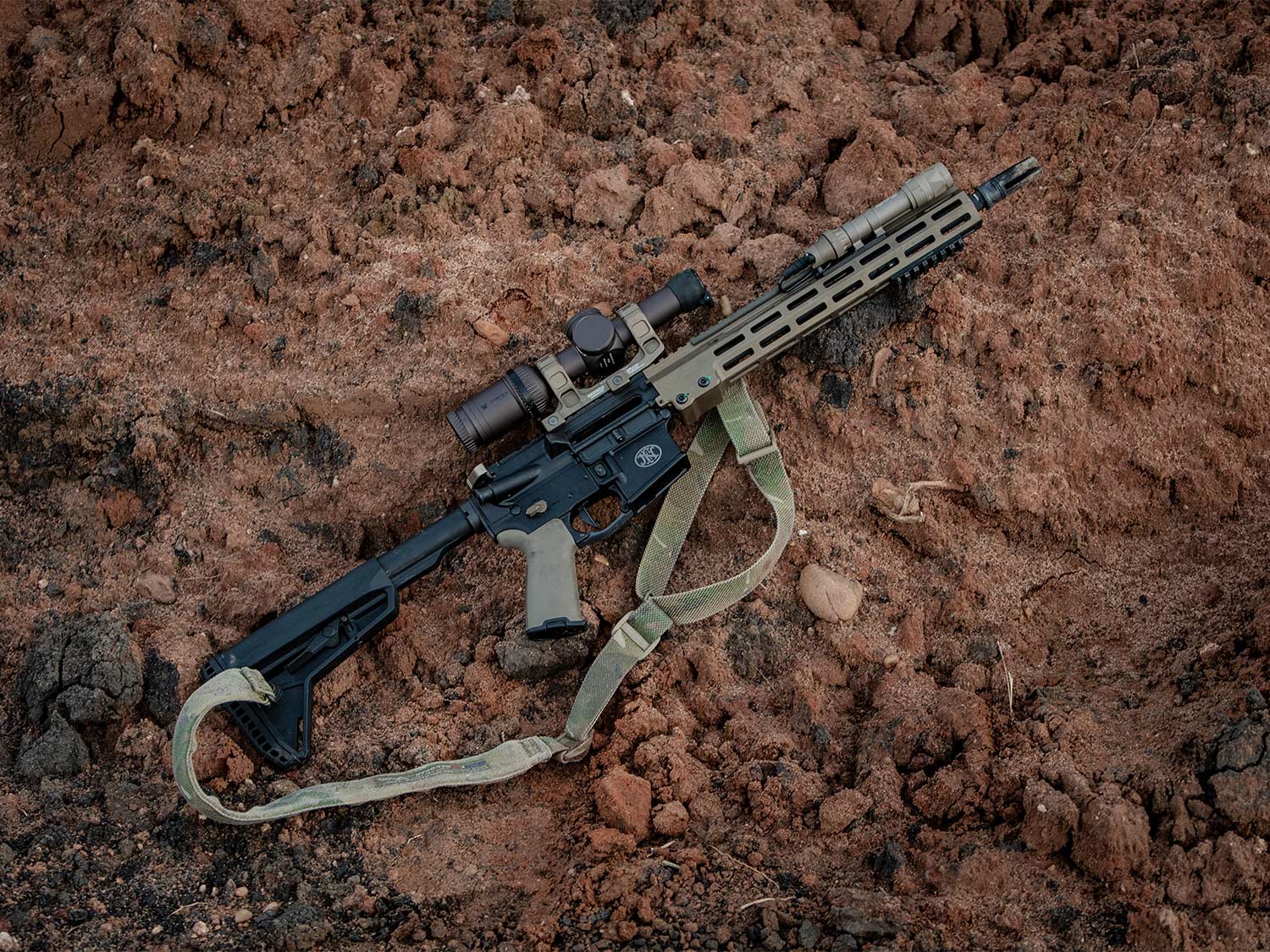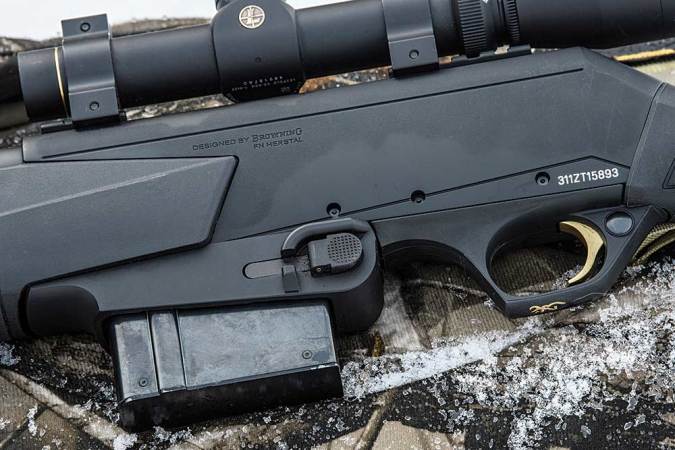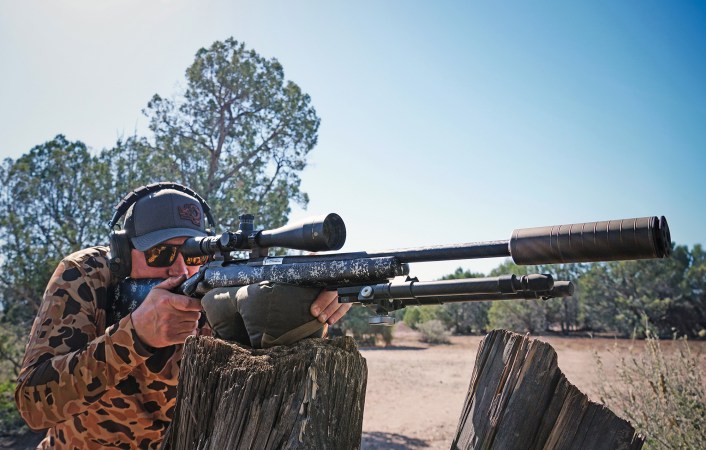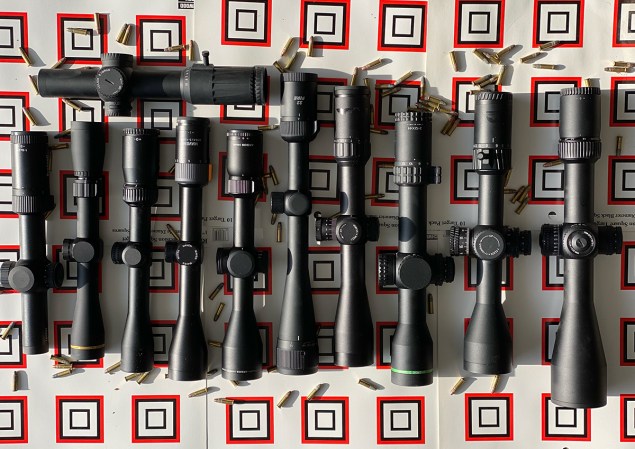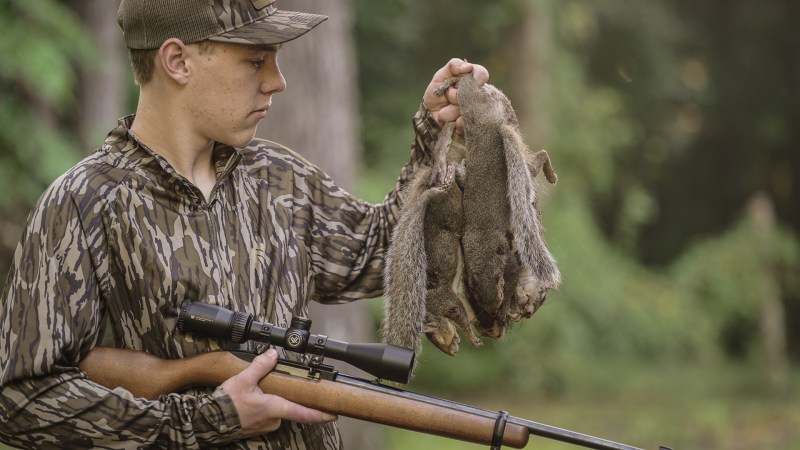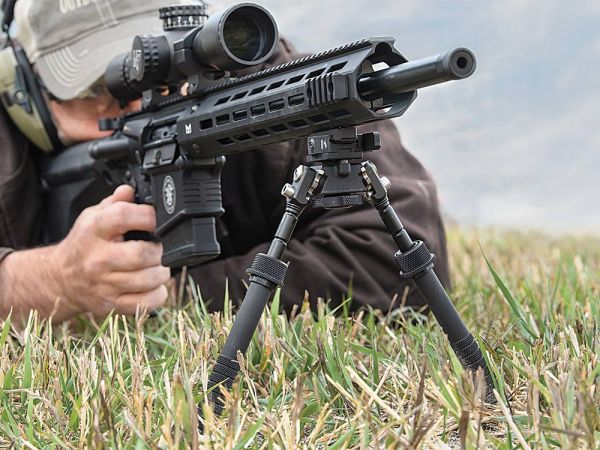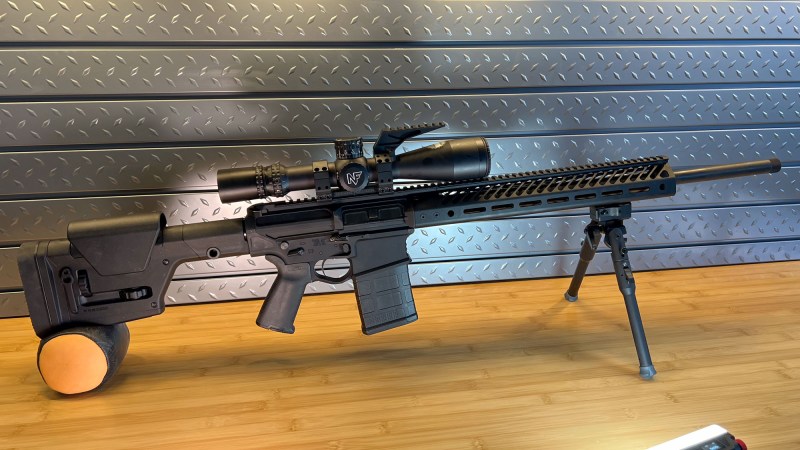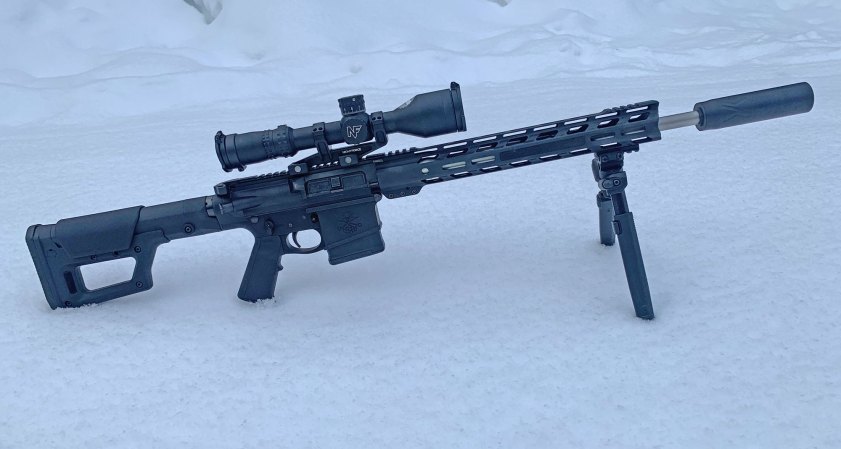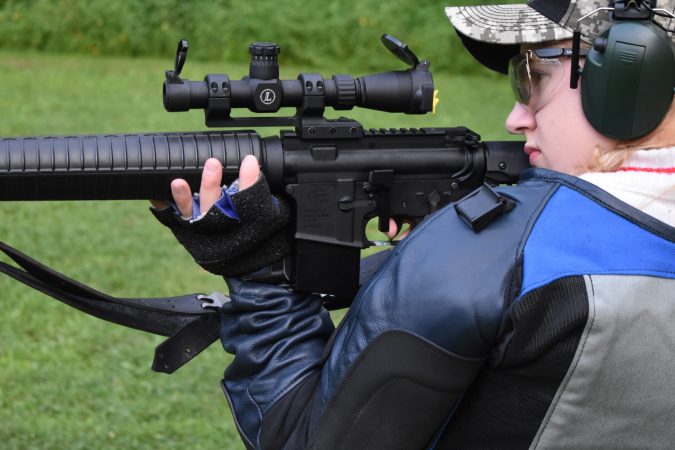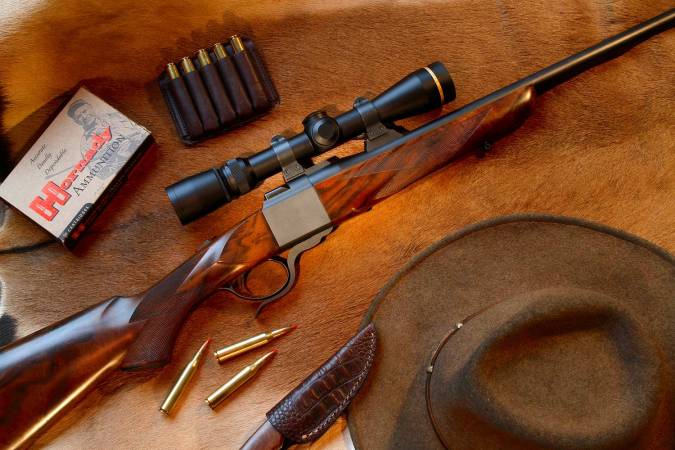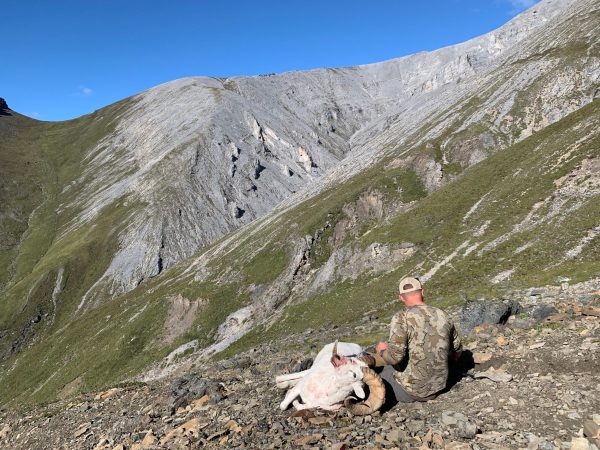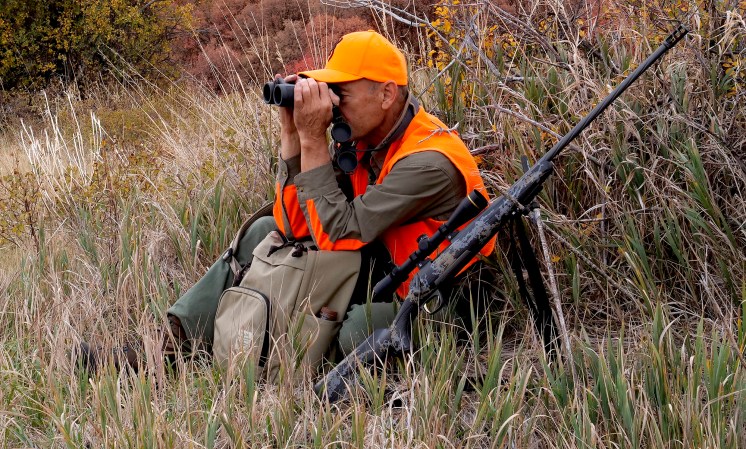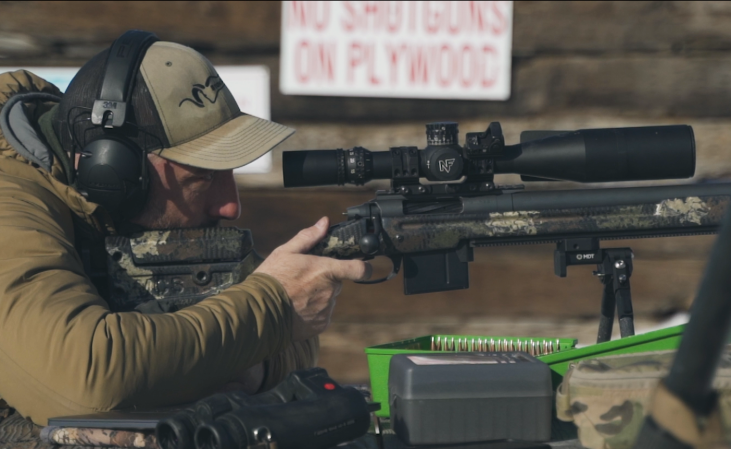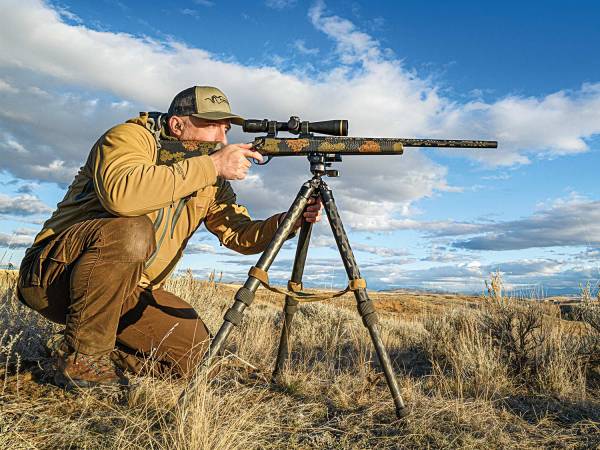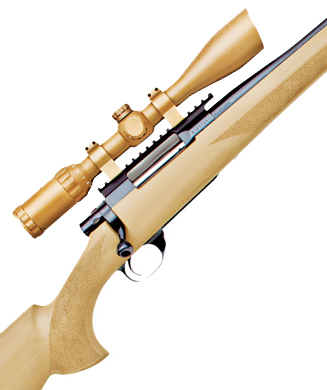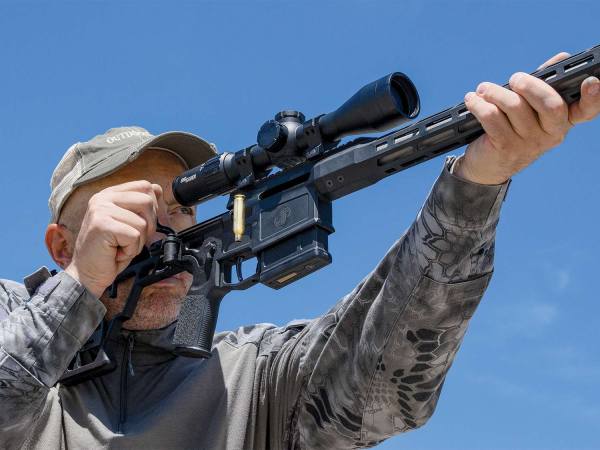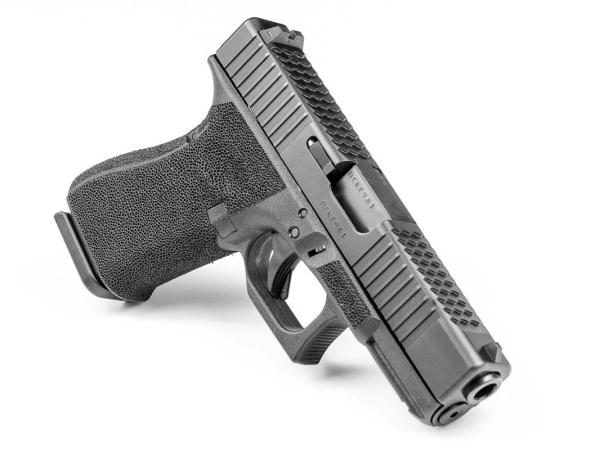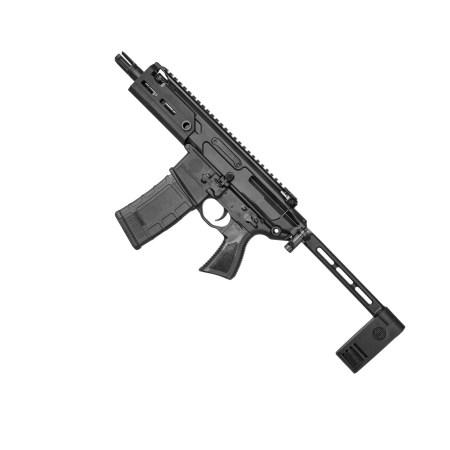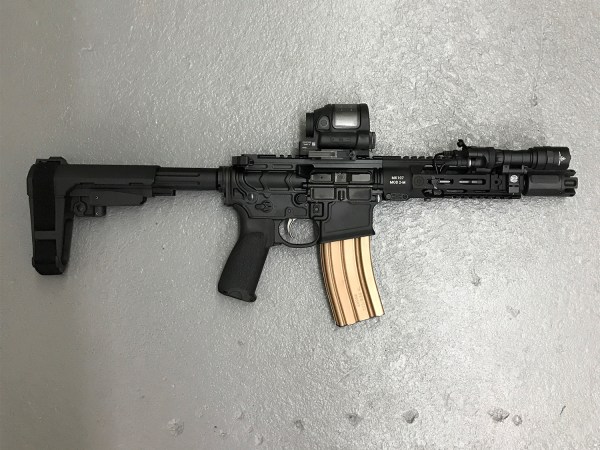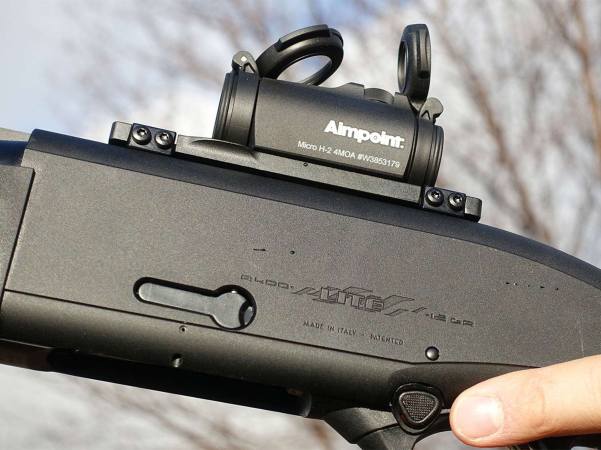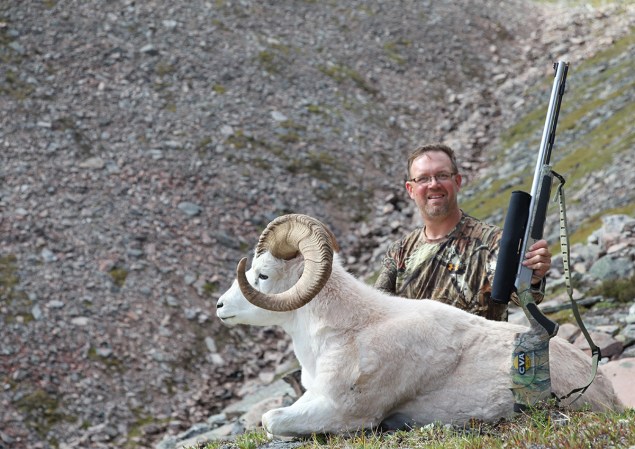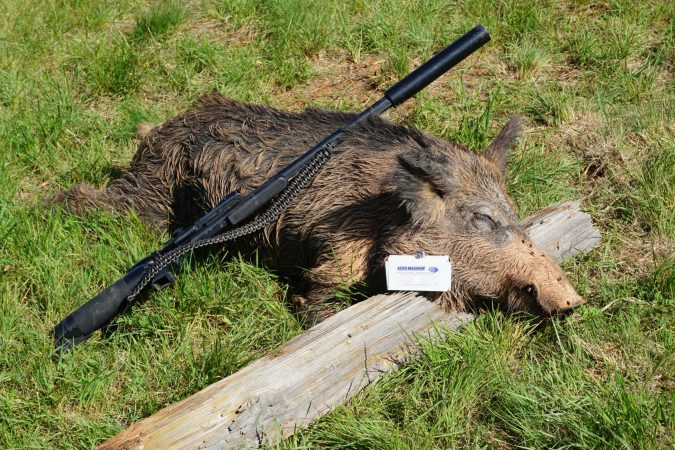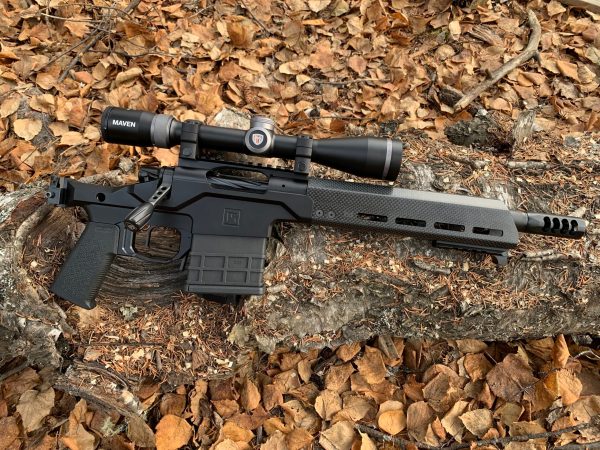We may earn revenue from the products available on this page and participate in affiliate programs. Learn More ›
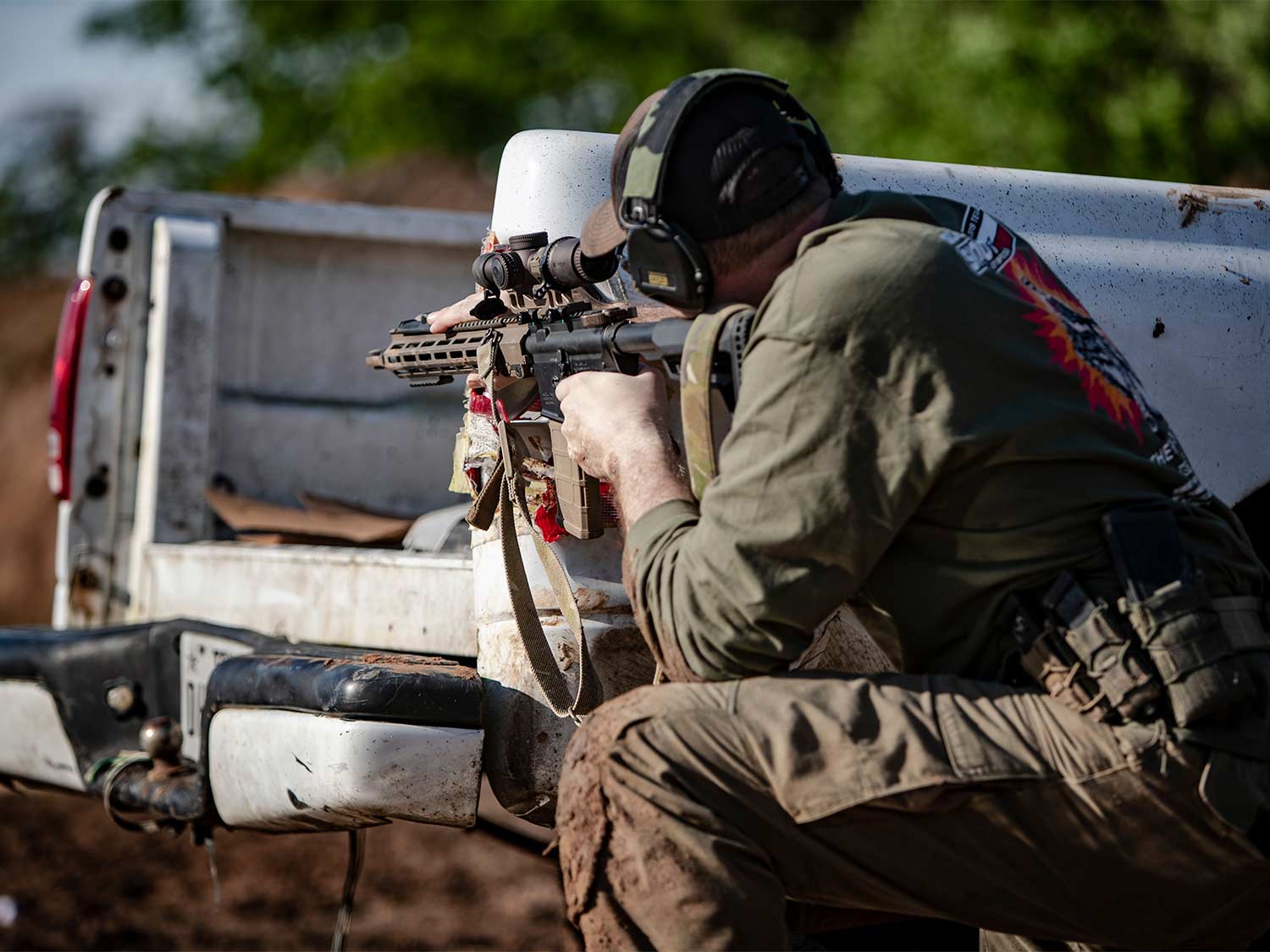
You just bought an AR-15 with the intention of accessorizing it with top-quality components to get the most out of the rifle. And there are a myriad of variables to consider, such as your intended use, geographic location, and more. But if you want one gun with the right aftermarket modifications to cover all the bases, there are some specific upgrades you need to make. My choice ingredients capitalize on the AR’s versatility, and act as a blueprint to help get you set up with the ultimate rifle.
Before we begin, know that the AR is such a modular platform that you can easily pick and choose your setup. If a specific component doesn’t work for you, simply pick one that does. The configuration of your rifle is completely up to you and, after some experimentation, you’ll eventually discover what components work best to fulfill the role you need them to.
If I set up your AR (a do-it-all weapon), the following are the modifications I would make. After years of trial and error, I’ve meticulously selected a list of components that have been thoroughly compared with other products in their categories and selected the ones that provided a significant increase in my performance, as well as the handling and function of the gun in all shooting conditions.
Optic Options
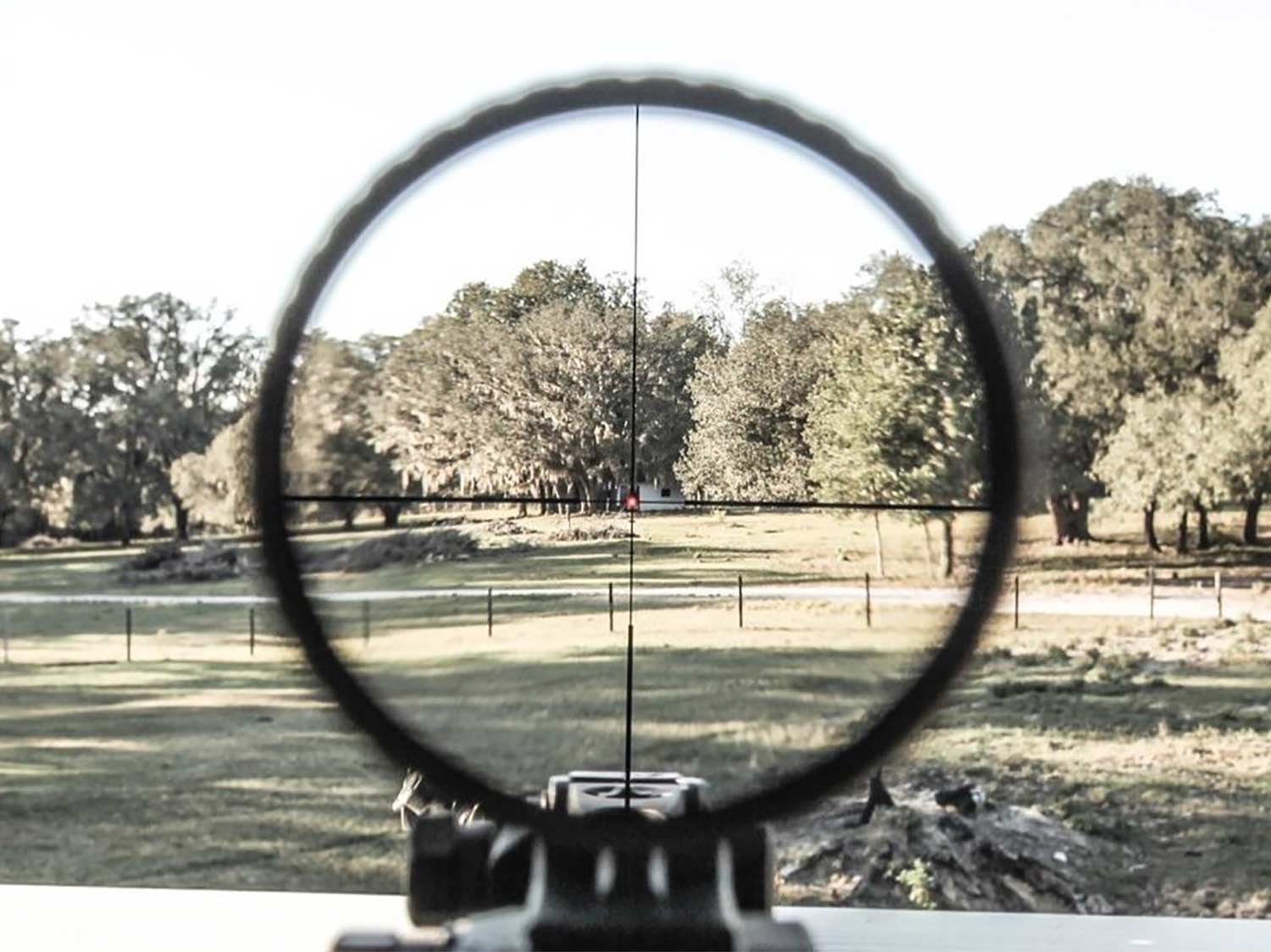
After you’ve decided on a rifle, the next priority is to select an optic that best compliments the capabilities of your new AR. Choosing the right optic is arguably as important as the platform itself, and where the majority of your funds should be spent. All too often, folks purchase an expensive rifle, only to bolt a cheap red-dot sight and an equally cheap mount to the top rail. Realistically, you can do a lot more with a cheaper rifle coupled with a high-quality piece of glass. In many cases, I’d recommend spending twice the cost of the rifle on a good optic and a solid mount.
For any rifle with a 14.5-inch or longer barrel, I recommend forgoing a red-dot sight and instead selecting a low-power variable optic (LPVO). For such a rifle, the ultimate LPVO is the Razor HD Gen III 1-10×24 by Vortex Optics. This optic can do everything you need it to do.
The Razor HD Gen III 1-10x is based off the company’s extremely successful Razor HD Gen II 1-6x, chosen and fielded by some of our nation’s most elite special operations forces within USSSOCOM. It has proven itself to be extraordinarily rugged and up to the challenges of military abuse. Not only is the optic exceptionally durable, the forgiving eye box and fiber-optic illumination allows the optic to effectively function like a red-dot sight at 1-power, while offering a high-degree of precision at 6-power.
Shortly after the Razor HD Gen II 1-6x hit the market in 2013, it quickly became the gold standard, and continues to be the benchmark by which all other LPVOs are judged. Even in today’s battle for LPVO supremacy, there is no optic that checks all the boxes the Razor HD does, especially at its price point.
The Gen III 1-10x builds off the successes of the Razor HD Gen II 1-6x optic and shares the same size and weight as its predecessor, yet offers a 66 percent increase in magnification. Aside from outstanding optical clarity, one of the features that Vortex perfected is the eyebox of this optic. It is very forgiving and allows a lot of head movement while still maintaining a full field of view. In fact, the Vortex Razor HD Gen III 1-10x has the largest field of view of any LPVO currently available.
Many LPVOs require consistent head placement behind the ocular lens. If the eye isn’t lined up perfectly, the shooter is rewarded with scope shadow; essentially an occluded view of the target, where portions of the visible image become black. This is unacceptable in an optic destined for dynamic shooting in varying positions, as it slows the shooter down substantially when you try to reposition your head prior to making a shot. A tight eyebox is the LPVOs Achilles heel and one of the reasons they have been slow to gain traction in the military and law enforcement markets, who favor the unlimited field of view and target acquisition speed a red dot offers.
Vortex cracked the code. That means lightning fast, natural red-dot acquisition, effortless target-to-target transitions and increased situational awareness thanks to a huge field of view. When the Razor HD is brought to your eye, the scope and turrets literally disappear from view; only a minuscule frame is visible around the image. It’s incredible, and when mounted at the proper height, the Razor HD is every bit as fast, and bright, as a red-dot sight.
Pick Out a Christmas Tree
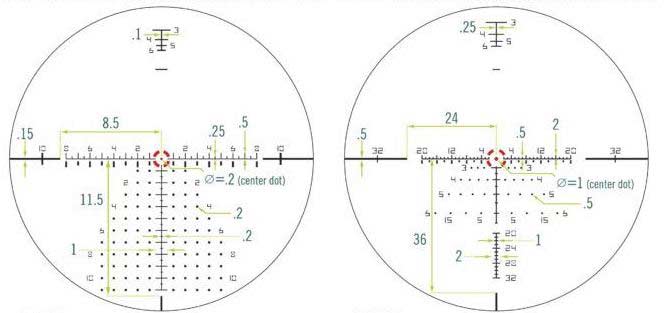
The Razor HD Gen III 1-10x isn’t just a big red-dot sight though. Most LPVOs are judged by their low power performance; one of the many areas the Razor HD shines. But the AR-15 is capable of engaging targets beyond 500 yards. To effectively do that, you need to be able to identify your target and at least see portions of it to make solid hits. The rule of thumb is 2x magnification for every 100 yards, making a 1-10x optic an ideal power range for this platform.
To take full advantage of this power range and the capabilities of your AR-15, a Christmas-tree-style reticle with accurate subtensions and wind holds is an ideal solution. The Gen III 1-10x is available in two reticles. One is in MOA and the other in MRAD.
The MOA hash-marked ranging reticle is a combination of a ballistic drop compensation and an MOA-based reticle. It offers subtension lines for ranging, holdovers and windage corrections, making it just the ticket for the shooter looking for a rapid acquisition reticle that is both straight forward and easy to use effectively.
The MOA/BDC Christmas-tree style reticle is optimized for 5.56mm AR-15s. You can use the reticle to estimate the range of targets, then, simply position the target at the appropriate number and squeeze the trigger. Each elevation hold is numbered in 100-yard increments from 100 to 600 yards. Beyond 600 yards, the reticle reverts back to MOA subtensions, all the way to 32 MOA. Wind hold dots are positioned in 5 mph increments from 5 to 20 mph and are calibrated for full-value wind. It really doesn’t get any easier or faster than the EBR-9 MOA reticle.
The EBR-9 MRAD is a mil-based reticle that requires a little more ballistic data and knowledge to use effectively, but those familiar will certainly appreciate this feature-rich reticle. The EBR-9 MRAD offers the same Christmas-tree style reticle as the MOA-based version, but all subtensions, holdovers, and windage corrections are MRAD- or MIL-based, which will blend nicely with your ballistic solver and will offer more precise aiming.
Both reticles offer the same segmented circle surrounding a center aiming point and offer a very fast, bright red dot for use up close, while also allowing for a high-degree of precision as distances increase, or smaller targets present themselves.
The the Razor HD excels as a close-quarter optic, while also allowing you see and engage targets well beyond the effective range of your AR-15, all with a healthy degree of precision. It’s also backed by a lifetime warranty. If it breaks, Vortex will fix it—period.
Choosing the Right Optic Height
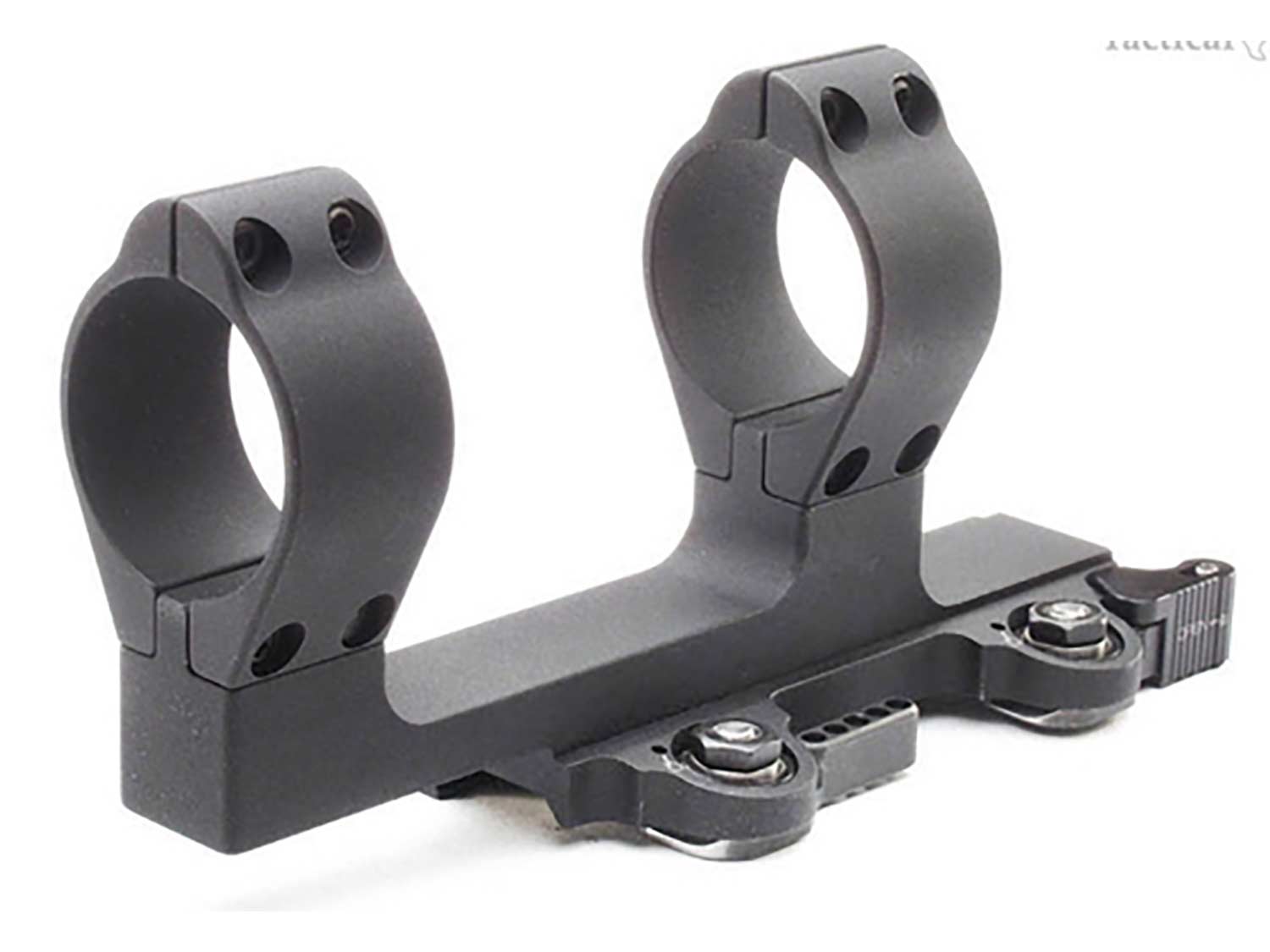
After selecting your optic, it’s time to choose the appropriate height optic mount. Most AR-style rifles will be best served with a 1.5- or 1.54-inch SPR (Special Purpose Rifle)-style, one-piece cantilever mount. Lower and taller mounts exist, but they are optimized for certain types of shooting. As an example, I am very fond of 1.93-inch height mounts that position the magnified optic at a height that is comparable with lower 1/3 co-witnessed red-dot sights. Red-dot sights positioned at this height are actually 1.72-inches above the top rail, but due to the size of the ocular lens of most LPVO’s, it will feel very familiar.
One of the reasons many folks are choosing these taller LPVO mounts is speed of reticle acquisition for stand-up shooting. They are almost as quick as a red dot to pick up from any position except prone, which is where they struggle. Due to the height above the rail, neck strain can develop over prolonged periods of time in this position.
A better choice for a general-purpose rifle is the 1.5/1.54 height. Depending on your body type and shooting style, you may be giving up a little speed, but you might be gaining consistency of cheek weld and comfort. My advice is to try them both and make your choice accordingly. My LPVO-equipped rifles are set up with 1.93-inch mounts because I prefer a more head-up shooting position, and prone is the position I spend the least amount of time in, but your intentions may vary from mine.
Primarily, these mounts are affixed to your rifle’s flat top upper receiver by way of either quick-detach (QD) throw levers or ½-inch bolts. Both methods are very secure. For QD mounts I like LaRue Tactical. LaRue mounts are quick to attach or remove and will return to zero if removed and reinstalled in the same place. If your rifle is equipped with a traditionally-placed back-up iron sight, I would highly recommend a QD mount. If your iron sights are mounted at an offset 45-degree angle, a traditional bolt-on cantilever mount is fine. Check out Geissele Automatics Super Precision mounts, Badger Ordnance Condition One, or one of the factory cantilever mounts from Vortex.
Subjective Trigger Selection
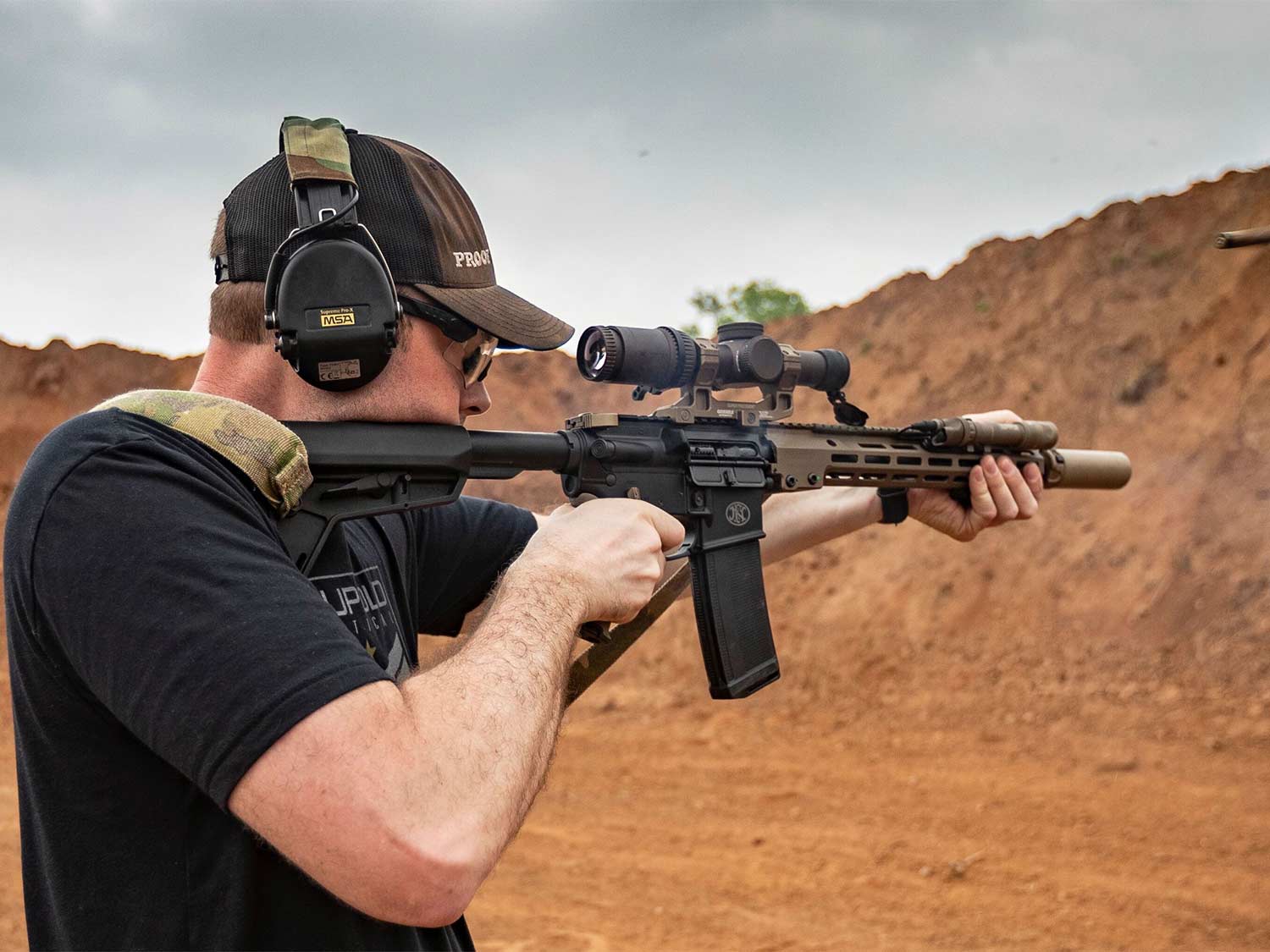
A light, smooth trigger is necessary to take full-advantage of the accuracy potential of your rifle/optic combination. With that said, a trigger is also very subjective. For a general-purpose AR-15, I prefer a two-stage trigger with a combined pull weight of around 4 pounds; one with a solid reset. I also prefer one with a flat trigger shoe. I have an above average hand size and found that a flat face trigger increases overall length of pull and allows my trigger finger to naturally and comfortably fall where it should on the shoe, nestled right in between the valley of my first and second distal joints. The trigger I have found that best suites my preferences is the Super Dynamic-Combat (SD-C) produced by Geissele Automatics.
Geissele’s SD-C is a non-adjustable combat trigger that performs much like a match-grade two-stage trigger and allows for precise, accurate trigger control. The SD-C is very similar to Geissele’s SSA trigger, the semi-auto version of the select-fire trigger that Geissele makes for the U.S. Special Operations community. It has a pull weight of 4 1⁄2 pounds: 2 1⁄2 pounds on the first stage and 2 pounds on the second stage. I’ve found this weight to be just right for this type of carbine. It allows for a high degree of precision, while also lending itself well to speed.
I like the two-stage trigger, as it’s designed to boost the shooter’s confidence by helping to reduce trigger jerk, thus increasing accuracy. The SD-C has a smooth feel and has been proven to be extremely reliable in field conditions and offers enhanced trigger control and accuracy while maintaining the reliability of a mil-spec trigger.
Read Next: 5 Tips for Better Long Range Accuracy with Your AR
The Right Bolt Carrier Decreases Malfunctions
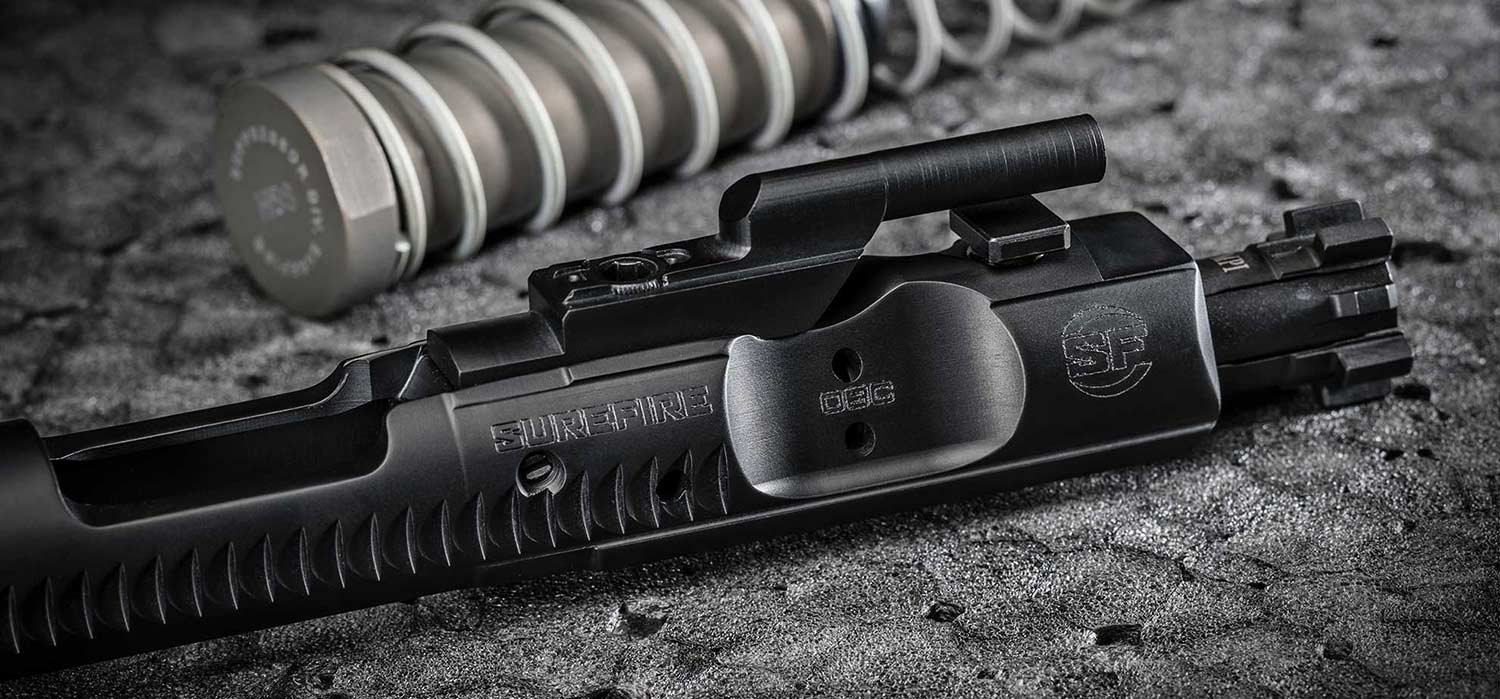
The heart of the AR-15 is the bolt carrier group (BCG). The stock works fine for regular shooting. But, when you add a suppressor into the mix, things can get a little complicated, especially in a direct impingement rifle. SureFire, in conjunction with one of the original designers of the M16, Jim Sullivan, created the Optimized Bolt Carrier (OBC) to solve this very problem.
The OBC doubles the reliability of your AR-15. Its patented design allows more time for reliable feeding of ammunition from the magazine and nearly eliminating bolt-over-base malfunctions, which can cripple your rifle.
The OBC also delays the unlocking of the bolt during the firing sequence, which allows expanding gases more time to exit the bore. This reduces back-pressure gases exiting the upper receiver group. A neutrally balanced counterweight fitted within the tail of the carrier improves both carrier and barrel extension lock-up, nearly eliminating bolt bounce.
You will notice a reduction in felt recoil. Installation of the OBC will provide increased performance of both man and machine, providing easier target tracking and greater control during rapid-fire strings. Coated with an advanced anti-friction coating, the OBC resists friction during use and makes cleaning easy— just wipe down the carrier with a damp cloth.
Coupled with a SureFire WarComp, the gun simply doesn’t move off your target, making off-hand, multi-shot strings laser accurate, repeatable, and very easy to accomplish. The OBC offers the single largest shooting improvement to the AR-15 than any product I’ve used to date. Add the longevity it brings to the rifles bolt life and the investment is a no-brainer.
Eliminate Muzzle Flash
For years, shooters have had to choose between a flash hider or compensator. Several hybrids have been produced, but all fall short on the flash suppression side. The WarComp effectively eliminates more than 98 percent of all muzzle flash, even on short-barreled rifles. The proprietary design of SureFire’s WarComp flash hiders/suppressor adapter provides the best attributes of both devices. WarComp’s deliver superior flash reduction and significantly reduced muzzle rise, helping to conceal your location, preserve your dark-adapted vision and keep you on target for faster follow-up shots.
Additionally, the ports are direction and can be optimized for virtually any shooting style. DLC coating provides maximum protection under harsh environmental conditions and facilitates cleaning even after extreme use. SureFire’s WarComp hybrid muzzle device has become the industry standard in both flash and recoil reduction, and also acts as a suppressor mount for SureFire’s renowned suppressors. It’s amazing.
You Have to Buy a Suppressor, Too
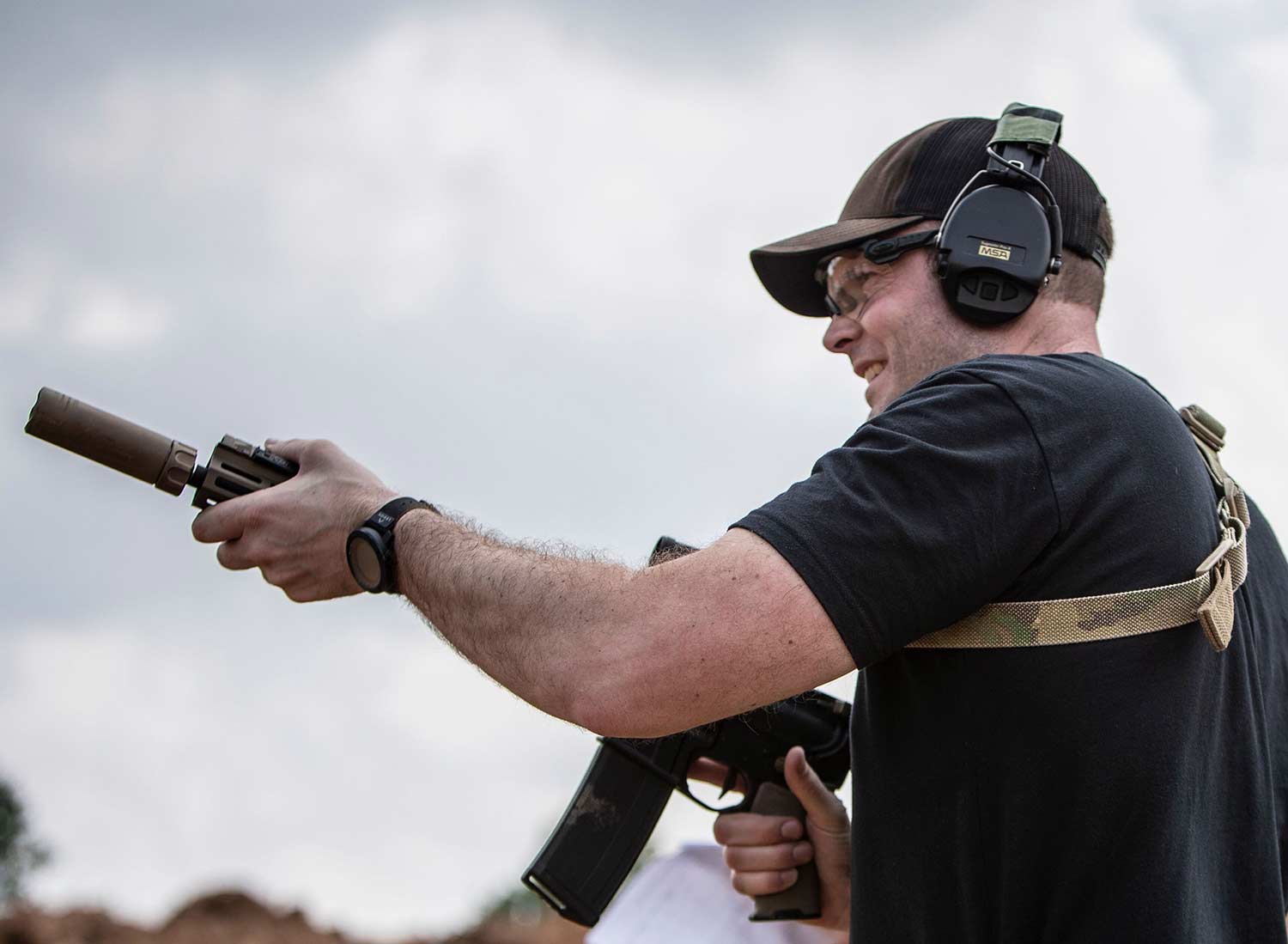
Another industry standard to add to the list is a SureFire suppressor. They offer improved gas-flow dynamics and a patented front plate design that virtually eliminates first-round flash, in addition to flash from subsequent shots, greatly reducing dust and debris signatures. When a round is fired at night, a flash comparable to the size of a sushi roll is all that can be seen.
My preferred suppressor is SureFire’s SOCOM556-MINI2. It delivers similar performance levels to the renowned USSOCOM-issued suppressor, but in a more compact package optimized for 14.5-inch and longer barrels. At just 5 inches long (adds only 2.5-inches to the total overall length of your rifle), it uses SureFire’s innovative internal baffling to significantly decrease back pressure, cyclic rate and gas blowback — making for a comfortable shooting experience. The Mini also utilizes the company’s Fast-Attach ratcheting system to quickly add or remove the can with the twist of a collar.
Not only does the SOCOM556-MINI2 offer significant reduction in sound and dust signature, it also offers consistent point-of-impact shift. That means adding the suppressor to your rifle does not require re-zeroing it.
Find the Proper Grip
The two pistol grips that I have standardized on are Magpuls MOE+ and K2+ grips. The latter offers a more vertical grip than the traditional A2 and MOE variant. The more vertical grip provides a comfortable and effective shooting experience, as it will allow you to keep your wrist straight and locked, to efficiently pull the rifle into your shoulder pocket. Both grips offer superior control over the rifle, thanks to a tactile rubber overmold that ensures a solid grip regardless of wet or dry conditions. Both feature generous internal storage capacity capable of storing a spare bolt, a firing pin, lubrication, batteries, zip-ties, or other like-sized items.
While I’m adding a grip to my gun, I always install Magpul’s winter trigger guard. Not only is the opening enlarged for use with gloved hands, but also protects the firing hand’s middle finger by filling the gap normally present between the trigger guard and grip.
A Proven Stock
My favorite stock is Magpul’s SL. It has a slender profile that puts plenty of surface area against the firing shoulder. The adjustment lever is tucked out of the way where accidental activation is unlikely. There are metal flush QD sling swivel cups on either side of the stock and two locations where the sling can loop around the stock for direct attachment. I like to add Magpul’s .30-inch enhanced rubber butt pad that not only increases friction, but also length of pull.
Magpul is one of the few companies that test its products to destruction. The SL stock is so durable you could extend it and then repeatedly butt-stroke the ground without breaking the stock. It’s likely the positioning detent in the buffer tube would deform before the stock broke.
Smooth-Operating Safety
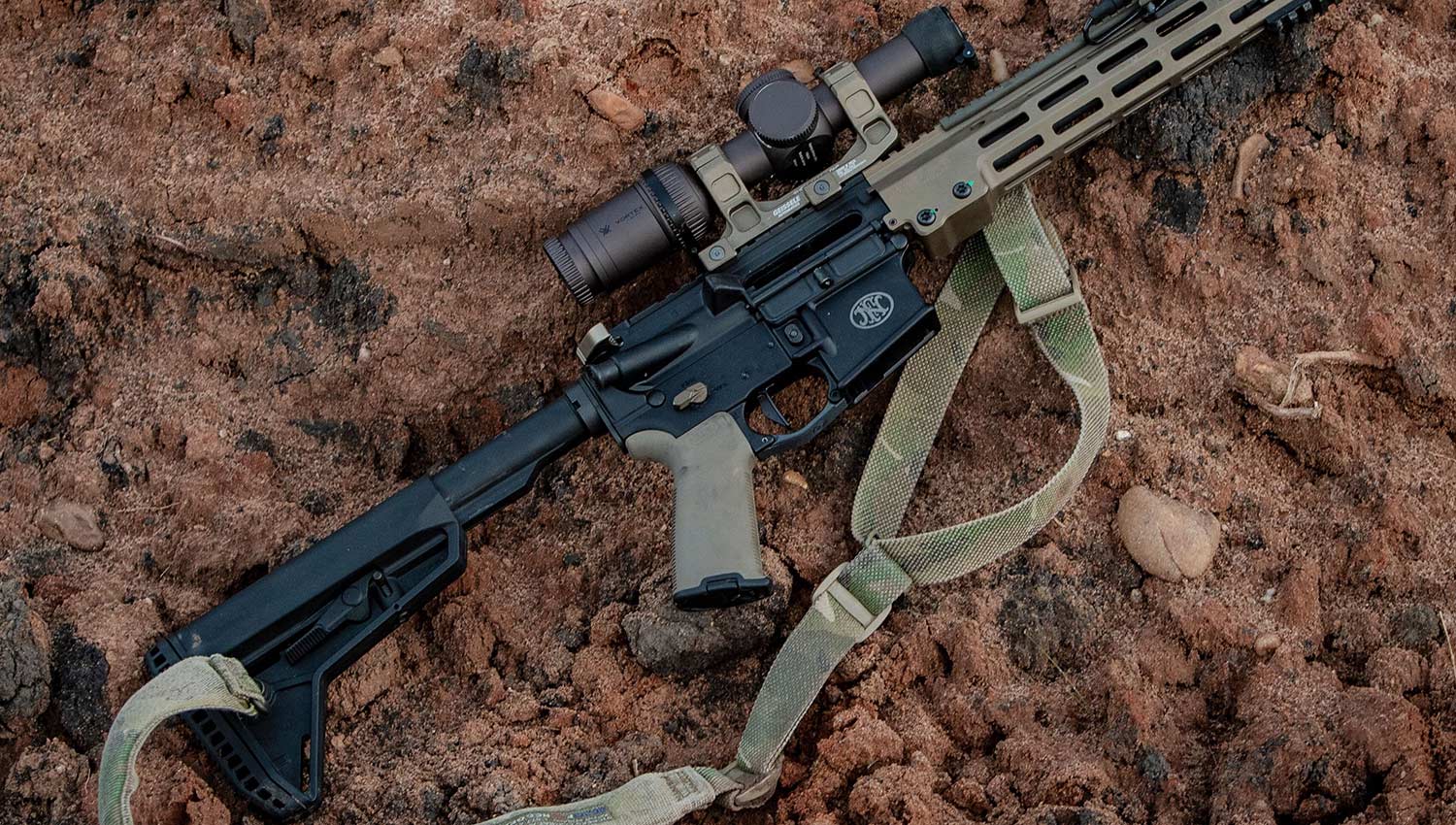
I install Radian weapons Talon ambidextrous safety selector in all my rifles. They offer a modular design that can be installed as a standard 90-degree (my preference) or as a short 45-degree throw by simply rotating the shaft 180 degrees inside the lower receiver when installed. Each selector lever is installed using a precision machined dovetail interface with spring-loaded retention stud to lock the lever in place. This means there aren’t any screws to come loose or break. The Talon offers a two lever combo; one long lever and one short lever. As a right-handed shooter, I place the long (standard length) on the lower receivers left side and the shorter on the right side. I’ve tried a lot of different ambi-selectors over the years and have found a favorite in the Talon’s shape, size, and smooth operation. Having a short right side doesn’t impede or contact my trigger finger as well.
Turn Darkness into Daylight
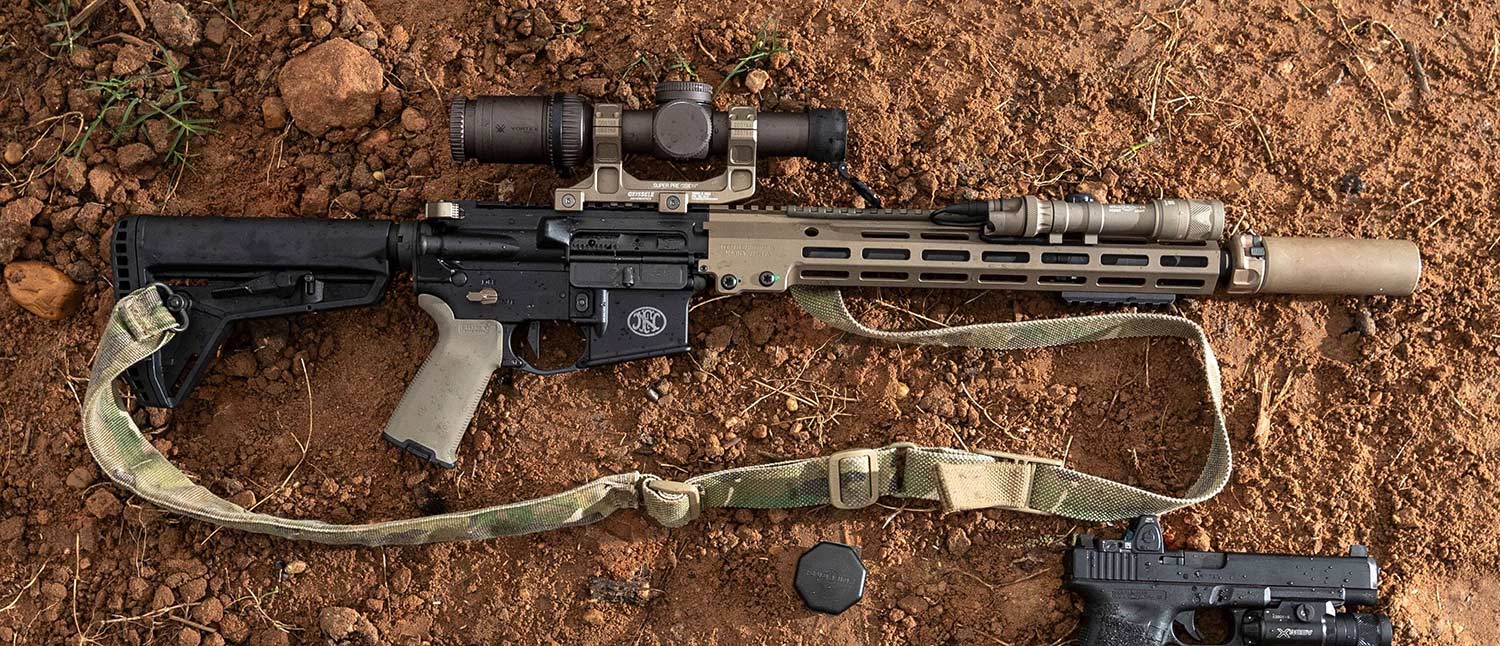
I want a carbine light that is lightweight, has an extremely bright, focused beam, and can be equipped with a switch that allows both momentary and constant on switches that I can custom configure around my support hand grip. It also has to be reliable in all conditions.
SureFire’s M600 Scout Light Pro is a recoil-proof, ultra-high-output LED that delivers 1,000 lumens of blinding white light. Its proprietary TIR lens shapes the light into a far-reaching beam with ample corona, or surrounding light for exceptional peripheral vision; making it ideal for medium to longer-range applications.
What sets the new PRO apart from its predecessors is the way it mounts to your rifle. In the recent years, fixed offset or inline mounts were developed, becoming the preferred method of mounting a light to the fore-end of your AR-15. These methods would tuck the light closer into the rail, reducing its overall profile, but at an added cost and fragility.
The new PRO features a new Low-Profile Mount (LPM) that allows the light body to rotate and roll inboard or outboard, fitting snuggly beneath other accessories, significantly reducing the profile of the light. LPMs are compatible with M-Lok and Picatinny rail sections.
I always add SureFire’s DS-SR07 switch to my Scout Lights. This accessory is a waterproof switch assembly for SureFire’s Scout Light Weapon Lights. The switch includes a system disable feature, click-on/off pushbutton switch, and a plug-in SR07 switch assembly and a 7-inch momentary-on and click-on/off remote tape switch. The integrated pushbutton and remote switch assemblies operate independently, providing switch redundancy and can be placed anywhere a small section of Picatinny rail is located. Or modify the switch and glue it anywhere along your handguard to optimize your support hand grip.
The Ideal Ammo
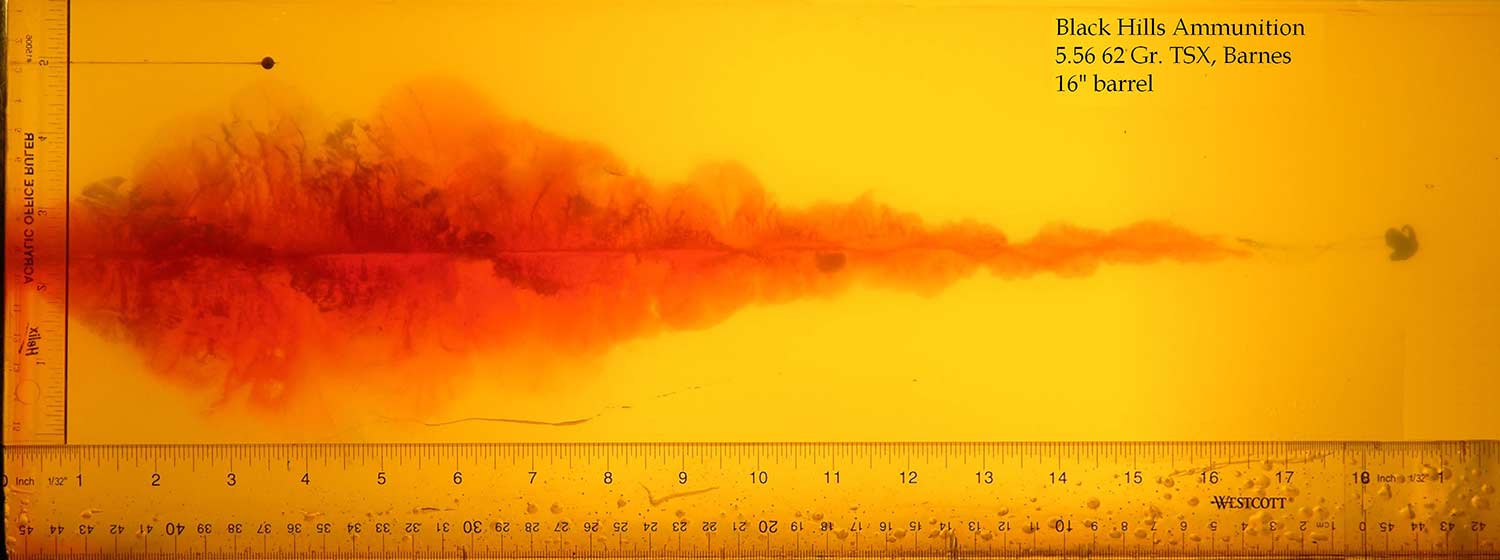
I’m a fan of 5.56 NATO. It is available in quantity practically everywhere. Availability means you can get out there and practice with your rifle. The cost per round is so low that it won’t break the bank and you won’t be afraid to expend a couple hundred rounds in a practice session. 5.56 has a reputation for being extremely accurate and lethal at practical ranges. Recoil is tame, allowing for very fast, controllable follow-up shots. Lastly, 5.56 ammunition is reliable. Even cheap, dirty ammunition goes bang each time you pull the trigger, and if your gun is setup properly, it always will.
My go-to choice for ammunition is manufactured by Black Hills Ammunition. I choose the 62-grain TSX load. The Triple Shock X (TSX) bullet is made of 100 percent copper and contains no lead. When the bullet expands, four razor-sharp cutting petals are created, allowing the bullet to penetrate farther. These bullets usually retain 100 percent of their original weight and are highly regarded as one of the best-performing 5.56 loads available.
Using Black Hills 62-grain Triple Shock (TSX) ammunition and a stable firing position, you should easily own everything from contact distance to 600 yards. I regularly take my 14.5-inch barreled AR out to this distance and can hold the A-zone of an IPSC silhouette in all but the windiest conditions at 500 yards.
Sling Support
A sling is to a rifle as a holster is to a pistol, which means you should have one on your rifle. I’m a huge fan of quick-adjust two-point slings. Specifically, one that offers a quick adjustment tab or slider that allows the user to quickly change the length of the sling and the ability to tighten, loosen, or to use for sling-supported shooting.
Numerous variations of this type of sling are available: padded and unpadded, metal or polymer hardware, different width webbing, in both solid colors and trending camouflage patterns to match your taste. Choose the brand you like the most. My preference is Viking Tactic’s VTAC sling, but I also use Magpul’s MS1 and Blue Force Gear’s VCAS as well.
I prefer quick-detach sling swivels on both ends of the sling, but would recommend at least equipping the front attachment point with one. This allows you to quickly remove the sling in an emergency, should you get tangled, or to wrap the sling around an object to obtain a more stable shooting position.
I attached the rear end of the sling to the right side my stock and the front end at the beginning of the rifles fore-end on the left side, as I’m right-handed. This allows for extensive adjustment options and full control of the muzzle when the rifle is slung. This positioning also provides uninterrupted access to the full length of my handguard, allowing for freedom of support hand placement, and the rifle lays flat against my body when it’s not in use.
